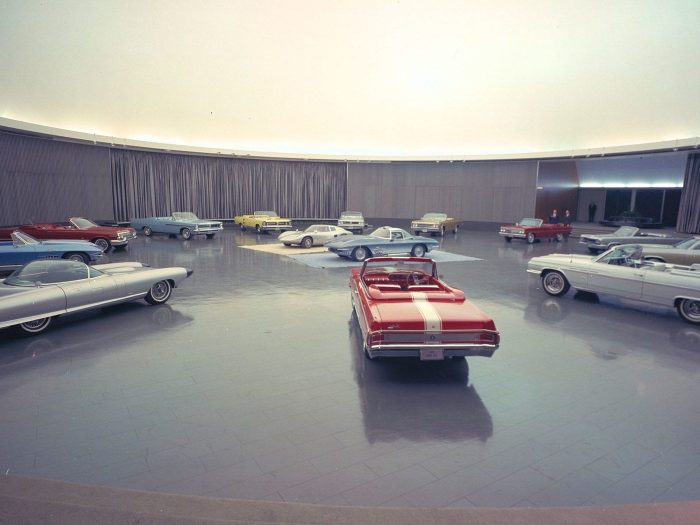When you look into your closet in the morning, how you decide what to wear? Comfort, warmth (or coolness, depending on the time of year), and style are all big factors. But one of the biggest ones, whether you consciously consider it or not, is color.
Color is a powerful attribute that has a direct impact on your mood and emotions. Brands have been using colors for decades, both wittingly and unwittingly, to affect how their audiences react to their advertising and marketing. And your brand can, too.
Let’s explore the psychology behind colors and look at 6 campaign examples of brands using color to evoke a specific reaction.
Color Psychology 101
There are a lot of great resources out there on the web that explore color psychology in detail. One recent resource I’d recommend is the Color Psychology Guide from CoSchedule.
Here’s a quick rundown of what each of the major colors represents and the feelings it evokes.
- Black: Represents sophistication, quality, seriousness; also fear, sadness, and mourning. Should be used in small doses.
- White: Represents innocence, cleanliness, peace, and ideation.
- Red: Evokes immediate needs and strong feelings such as love, anger, and warning. Can portray energy in a positive, friendly way or a negative, aggressive way.
- Yellow: Evokes happiness and optimism (see the hero image above) as well as confidence. Serves as a strong stimulus—in fact, it’s the first color we respond to.
- Orange: Represents physical comforts such as warmth, shelter, and food. Usually associated with positive motivation and enthusiasm.
- Blue: Evokes trust, dependability, and calm. It’s visually harder to see, and is more cerebral than emotional.
- Green: Represents harmony, balance, nature, growth, and health.
- Purple: Associated with imagination, spirituality, and luxury. Since it’s a soothing yet also stimulating color, it’s also associated with creativity.
- Pink: Evokes feelings of hope, romanticism, and empathy.
- Brown: Represents structure, protection, security, and seriousness.
6 Examples of Color Psychology in Action
The most memorable brands also tend to use color in a consistent, memorable way in their advertising and marketing campaigns. These 6 brand campaigns show how you can use color to drive very specific, predictable reactions from viewers.
Red: Coca-Cola
 Source: BusinessWire
Source: BusinessWire
In Coca-Cola’s new “Taste the Feeling” campaign, they incorporates red into the beach towels, outfits, and nail polish used in their print ad to complement their red logo. The effect is friendly, eye-catching, and emphasizes the action of the models drinking their refreshing soft drink. The end result is that you want to buy a bottle of Coke.
Blue: American Express
As a finance company, American Express uses blue in their logo, their product line, and their content to drive home trustworthiness, calm, and dependability. In their latest ad campaign featuring Tina Fey, blue is incorporated into Tina’s yoga mat and clothes, as well as the ending animation. It also makes it easy to to remember the name of their card (Blue).
Green: Starbucks
 Source: Carolyn Wagner
Source: Carolyn Wagner
Starbucks’ fair trade campaign uses various shades of green to drive home their message of sustainability and harmony. Their causal typography and hand drawings further evoke a feeling of restfulness and being one with nature.
White: Apple
 Source: Adweek
Source: Adweek
Apple’s entire brand aesthetic is built around a lot of white. Their logo is white, their website has a lot of white space, and their advertising uses a lot of white as well. Given that white evokes ideation and creativity, this color choice makes a lot of sense. For example, in this print ad, the use of expansive negative space highlights the colorful elements of the Apple Watch screen and band, emphasizing their product and its innovativeness.
Black: Nike
 Source: Bob Is Ten
Source: Bob Is Ten
Nike’s logo and print advertising uses black to evoke power, quality, and seriousness. In this ad, a solid black background allows the creative treatment of the shoe to shine through, drawing the eye inward toward the paint splatters. It also creates an atmosphere of sophistication and elegance that you don’t usually see in sportswear advertising.
Purple: Virgin America
 Source: Cargo Collective
Source: Cargo Collective
Virgin America is a brand that uses color in an unusual way. Their logo colors are red and white, but their brand colors are purple and pink; everything from the plane cabin lights to their billboards to their website reflects this color scheme. In this print ad, they use the color purple to drive home a feeling of luxury, exclusivity, and imaginativeness while maintaining their trademark humorous visual tone.
The Bottom Line
The next time you’re considering visual content for your brand, think about how you can use color to further emphasize your message and brand tone.
Before you go: Share your favorite example of brand color psychology in the comments!
 // <![CDATA[
// <![CDATA[
hbspt.cta.load(403603, '90c77495-f7ed-4bd6-a47f-0e033381ac7b');
// ]]>


